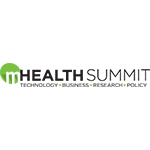By Scott Gottlieb, M.D., and Gerald Dal Pan, M.D., MHS
The U.S. Food and Drug Administration (FDA) is an information-driven agency that requires robust data to make regulatory decisions. One of our key obligations is to analyze large quantities of data related to the safety and effectiveness of medical products; and turn these signals into information that can help patients and providers make more informed decisions. Maximizing the benefits of today’s sophisticated arsenal of FDA-approved medical products requires an equally advanced set of tools for collecting this data, and evaluating it, as a way to monitor and inform about the safety of these new innovations. One of the most important of those tools that we use to advance these efforts is large-scale electronic safety surveillance: the ability to access and analyze data across millions of patient experiences with the medical products they use – while protecting the privacy of individual health care records.
A little more than a decade ago, such a wide-reaching electronic resource was just an idea among visionary thought leaders. Today, it’s become a reality as a national electronic system for monitoring the safety of FDA-approved drugs and other medical products called the Sentinel System. That development of that system was a watershed achievement. We’re now looking for new ways to build on this robust tool, to develop an even better generation of tools for using data to improve safety.
Sentinel has become an integral part of FDA’s safety monitoring efforts. It’s a critical engine for methodological innovation, and a platform to advance the science of real world evidence (RWE).
Prior to the implementation of Sentinel, for many years, FDA’s primary source of medical product safety data came from adverse event reports from patients, health care professionals, the pharmaceutical industry, and others. These reports, collectively part of a “passive surveillance” system in FDA’s Adverse Event Reporting System (FAERS), still serve a critical purpose for safety researchers. However, the “active surveillance” capabilities of Sentinel are an extremely important complement to FAERS data. Instead of waiting to receive safety data, it enables FDA to go out and get it when needed.
Since its official transition from a pilot over a decade ago, to a fully operational Sentinel System in 2016, hundreds of analyses have been completed and more than a dozen regulatory outcomes shared online. Many more are ongoing or under review. Sentinel has been influential in a range of outcomes including label changes and Advisory Committees meetings. On a number of occasions, it provided important evidence for the safety of medical products and helped inform the basis of FDA’s conclusions.
In addition, the more widespread use of RWE can make our medical product development process more efficient and help lower the cost of development. More importantly, it can help make sure doctors and patients are better informed about the clinical use of new products, enabling them to make more effective, efficient medical choices. This will ultimately help us achieve better outcomes, and safer and more efficient use of expensive technology. Going forward, we’re pursuing ways to better incorporate information from electronic health records (EHRs) into pre- and post-market surveillance. Sentinel largely relies on data from insurance claims. Data from EHRs can provide additional, important insights. We’re also developing knowledge management systems and seeking to better leverage artificial intelligence to advance natural language processing in the evaluation of information from claims data and EHRs. The FDA has sought new funding to advance these initiatives in the next year.
We’re also announcing new steps that we’re taking to make Sentinel more robust.
The Sentinel System is now a core feature of FDA’s post-market safety surveillance armamentarium and a vital test bed for advanced technologies and approaches. Yet, recognizing that the evolution of science can happen quickly and knowing the FDA must be able to keep pace with a changing drug development and safety ecosystem, we’re today, putting forward our new five-year strategy.
This strategy envisions a more robust Sentinel System which operates as a transformative national resource. The data and scientific resources will function as a multi-purpose center for evidence generation with the potential to be used by more stakeholders and inform all aspects of healthcare decision-making. To achieve this, by 2023, FDA has identified the following five strategic goals.
- Enhance and expand the Sentinel System’s foundation, including data, infrastructure, operations and technology;
- Augment Sentinel’s safety analysis capabilities using advances in data science and signal detection;
- Use the Sentinel System to accelerate access to and broaden the use of real-world data for real-world evidence;
- Broaden the Sentinel System’s ecosystem of stakeholders to pursue the vision of a national resource, and
- Disseminate knowledge and advance regulatory science to encourage innovation and meet the agency’s scientific needs.
Our plan outlines how the Sentinel System and FDA-Catalyst, as part of the broader agency-wide Sentinel Initiative, can continue to grow and achieve this ambitious vision. The cumulative impact of all five aims of this new plan will be substantial. It will allow stakeholders to continually discover new approaches to growing the Sentinel System’s capabilities for the next five years and beyond.
We’ll be discussing our vision of the plan with interested stakeholders at a workshop on April 3-5, 2019. We encourage all interested parties to read the plan and attend the meeting. Securing product safety remains a top priority at the FDA. This 5-year plan is a key ingredient for future success. We look forward to collaborating with our stakeholders and partners to make this vision a reality.


























